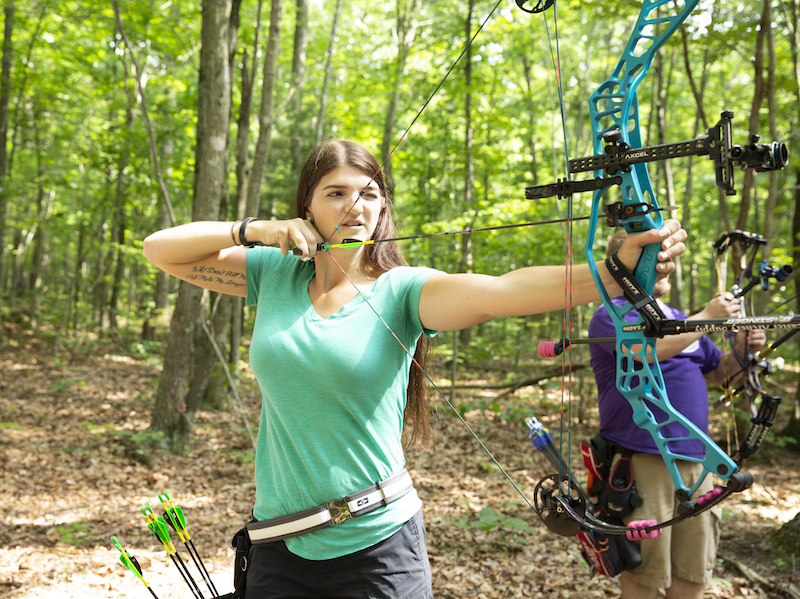The end of hunting season doesn’t mean you should put your bow into storage. It’s the start of competitive archery season. Indoor archery in winter, followed by field and 3D archery in summer, will make you a better archer, teach you how to handle pressure, and ensure lots of fun while preparing for next hunting season.
If you hunt with a compound bow, you can choose from two main divisions in competitive archery: “open” and “bowhunter.” Equipment rules set them apart. The open class has fewer equipment restrictions, so competitors can use long stabilizers and magnified sights, and adjust their sights throughout the competition. The bowhunter class, aka hunter class, restricts competitors to short stabilizers and sights with no magnification, and they can’t adjust their sights once the competition begins.
The restrictions apply to accessories, not bows. You don’t have to use a hunting bow for the bowhunter division, but many competitors do. You can use a brightly colored target bow, as well as target-style hinge, thumb-button, or tension-activated releases. Your bowhunter class bow is allowed in 3D, field, indoor and collegiate archery.
The bowhunter division is ideal for those who want to compete with a bow they know well. That class is also excellent for beginners because they can compete with an off-the-rack bow without adding accessories. As you advance, you can add a short stabilizer and upgrade your other accessories.

ASA competitions allow the use of a magnified sight. Photo credit: ASA
Even though the equipment is simpler, the rules can be complex for bowhunter class. Let’s look at some common rules you’ll encounter.
USA Archery, the National Field Archery Association, the Lancaster Archery Classic and the Archery Shooters Association have similar rules for their bowhunter class.
They restrict archers to a 12-inch front stabilizer, and you cannot adjust your sight once competition begins. They allow rear stabilizers of any length.
Stabilizers are measured from the bow to the end of the stabilizer. Keep in mind the 12-inch length includes any weights or quick-disconnects. That’s why most archers buy a 10-inch front stabilizer, which ends up around 12 inches when adding weights. A common length for a rear stabilizer is 8 inches, but try different lengths to find what works best for you.
Two key differences in these three organizations’ rules are the NFAA restricts sights to a maximum of five pins, and the ASA allows magnified sights in some classes.
The International Bowhunting Organization is a popular 3D organization that has several hunter classes. You can read the IBO’s rules by clicking here.
To start competing, choose a style to pursue. Indoor archery is a great way to begin because you shoot targets at 20 yards, and you’ll find many indoor tournaments near and far. Contact an archery shop to learn about upcoming events and their rules. Then sign up for the tournament, start practicing, and go there ready to learn. After competing all winter, spring and summer, you’ll head into next hunting season with greater accuracy and maximum confidence.